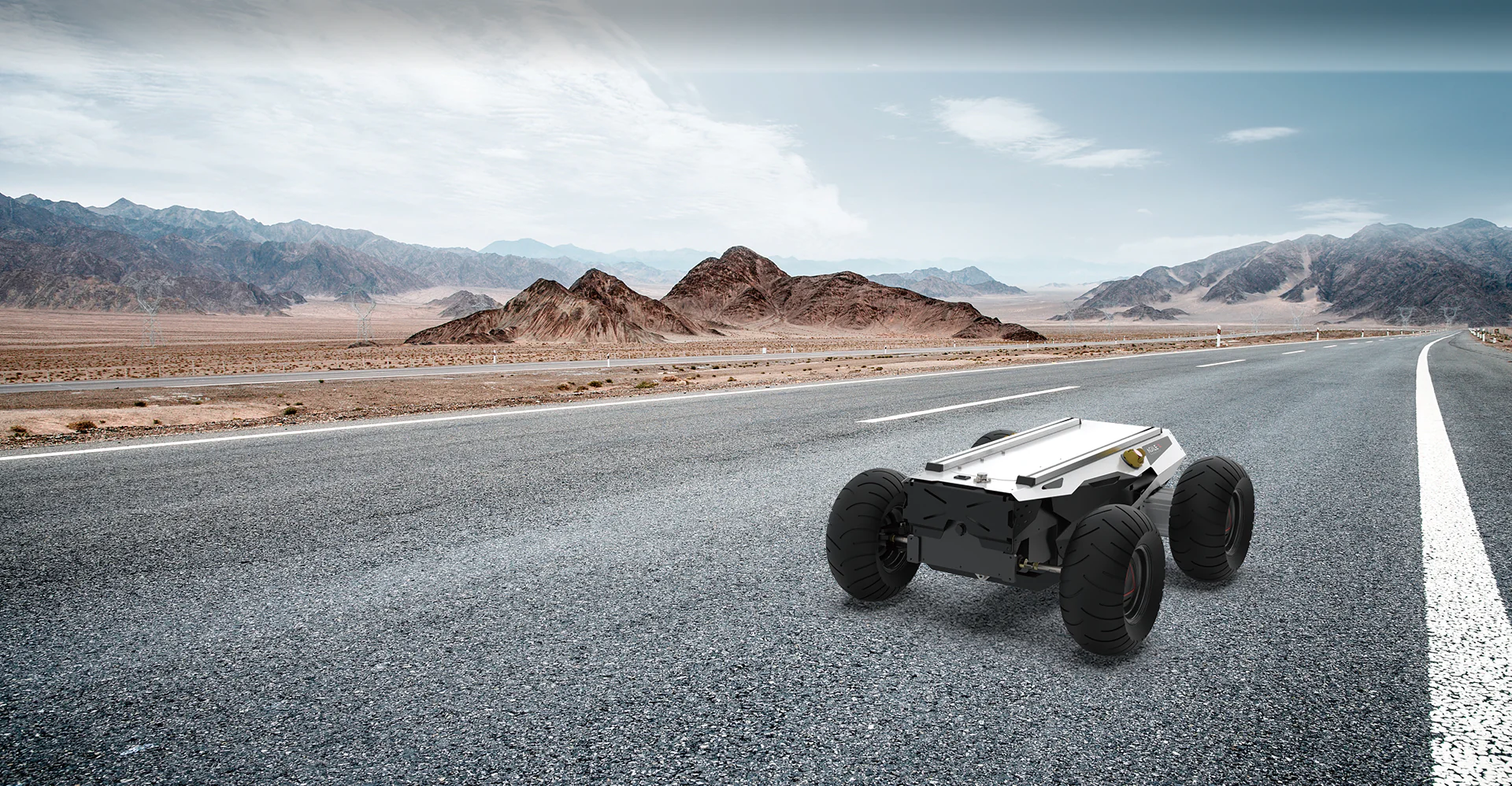Overview
AgileX Hunter 2.0
The AgileX Hunter 2.0 is specifically developed to excel in low-speed autonomous driving scenarios. Equipped with front-wheel Ackerman steering and rocker suspension, it can effectively navigate obstacles encountered on its path. The new-generation power system enhances payload capacity and extends endurance capabilities for superior performance.
Core Capabilities
Payload Capacity: 150 kg
Maximum Runtime: 240 minutes
Maximum Speed: 1.5 m/s
Features
Excellent Payload Capacity Hunter 2.0’s high load capacity enhances productivity, adaptability, worker safety, accuracy, and system integration. It effortlessly handles heavy objects, boosting production, reducing costs, and improving working conditions.
High Endurance Scenarios Hunter 2.0 is ideal for high-endurance situations with its car-like chassis, reduced tire wear, front-wheel steering, and rocker suspension. It is perfect for navigating speed bumps and other obstacles.
Adaptable and Scalable The robot’s modular design allows for easy reconfiguration and reassembly, making it adaptable to different task requirements. Hunter 2.0 can perform a wide variety of tasks.
Expansion and Secondary Development Hunter 2.0 provides aluminum T-slot rails for secure mounting of external sensors or kits. It supports CAN bus protocol and offers open-source SDK and software resources for expanded capabilities.
Technical Specifications
Dimensions: 980 x 745 x 380 mm Platform Weight: 65–72 kg Maximum Payload: 150 kg Climbing Ability: ≤ 10° (with load) IP Rating: IP22 Communication: Standard CAN, 232 Serial port
Performance
Maximum Speed: 1.5 m/s
Maximum Travel Distance: 40 km
Obstacle Clearance: 50 mm
Power and Endurance
The new-generation power system allows Hunter 2.0 to achieve up to 240 minutes of continuous runtime, making it highly suitable for prolonged operational tasks in diverse environments.
Expansion and Integration
Hunter 2.0’s aluminum T-slot rails and CAN bus support make it easy to integrate custom sensors, actuators, and software modules. Developers can leverage the open-source SDK for rapid secondary development.
Important
Specifications may vary depending on payload, configuration, and operational environment.
Maximum speed and climbing ability are tested under standard conditions.
The robot is intended for civilian and research applications only; avoid unsafe modifications.
